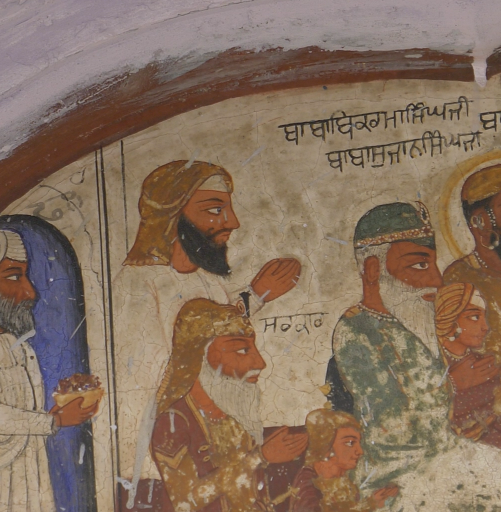Explore the Kirpan Morcha, a pivotal movement advocating Sikh rights to wear kirpans, challenging the restrictive Indian Arms Act of 1878.
Discover Mahitab Kaur's life, from her marriage to Maharaja Ranjit Singh in 1822 to the British pension support in her later years.
NIJATULLAH SHAH, SAYYID, British news writer at the Sikh capital of Lahore. Press lists of old records refer to his news diaries which give an account of the political state of affairs in the kingdom. He reports the events at Peshawar, the withdrawal of the British garrison at Jalalabad, and the return of the British army from Kabul in 1842.
Explore Ram Singh Nurpuria's role in the Sikh revolt against British rule, his alliances, battles, and legacy from the Punjab region's resisting spirit.
Explore the rise of Sikh Army Panchayats in post-Ranjit Singh Punjab, their role in governance, and their stand against British influence on the frontier.
Uncover Punjab's history from ancient rulers to Maharaja Ranjit Singh with this unpublished Persian work by Ghulam Muhaiy ud Din Ludhianavi, aka Bute Shah.
ANGLOSIKH RELATIONS need to be traced to the transformation of the British East India Company, a commercial organization, into a political power in India . Victory at Plassey (23 June 1757) brought Bengal under the de facto control of the British, and that at Buxar (22 October 1764) made Oudh a British protectorate. By August 1765, the grant of the diwani rights to the Company by the Mughal Emperor Shah `Alam made them the virtual rulers of Bengal, Bihar and Orissa. Robert Clive (1725-74), the victor of Plassey and governor of Bengal during 1765-67, watched with interest the repeated invasions of India by Ahmad Shah Durrani and rejoiced at his final repulse at the hands of the Sikhs in 1766-67.
Explore the history of Azad Hind Fauj, the Indian National Army, and its pivotal role in India's fight for freedom during World War II.
BIKRAM SINGH BEDI, BABA (d. 1863), was the third and youngest son of Sahib Singh Bedi of Una, a lineal descendant of Guru Nanak. On Sahib Singh`s death in 1834, Bikram Singh suceeded to his father`s jagirs and position as preceptor to royal family of Lahore. After the deaths of Maharaja Kharak Singh and Prince Nau Nihal Singh, Baba Bikram Singh tried to bring about a reconciliation between Maharaja Sher Singh and his collateral Sandhanvalia sardars. Baba Bikram Singh felt irked when British troops were stationed at Lahore after the AngloSikh war of 1845-46.
DALHOUSIE, JAMES ANDREW BROUN RAMSAY, First Marquis of (1812-1860), Governor General of India (1848-56), son of George (1770-1838), the ninth Earl in the peerage of Scotland, was born at Dalhouse Castle on 22 April 1812. He was educated at Harrow and at Christ Church, Oxford. He succeeded his father to the peerage in 1838 and became member of the House of Lords. In 1845, he became president of the Board of Trade. In 1846, he declined a post in the British cabinet under Sir Robert Peel.








